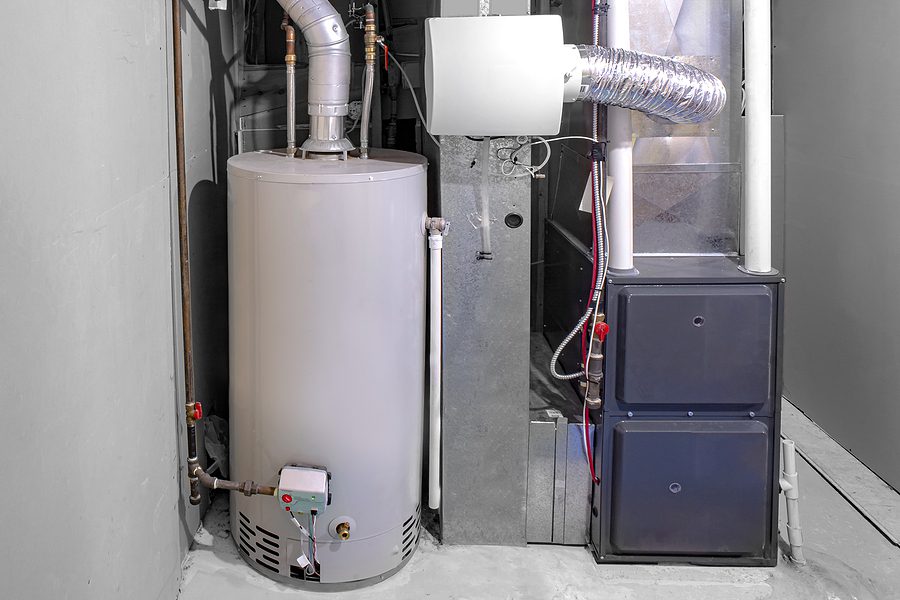
As winter’s chill sets in, you likely give little thought to the furnace humming away to keep your home comfortable. But understanding the basics of how your furnace functions can help you spot issues before they become problems. Read on to get the inside scoop on the inner workings of your home heating MVP.
What You Need
The first key fact about furnaces? They run on natural gas, propane, or electricity to generate heat.
- Natural gas furnaces tie into gas lines already running to your home. They ignite gas to create a flame that heats air.
- Propane furnaces store liquid propane in an external tank next to the home. The propane converts from liquid to gas when ignited to heat air inside the furnace.
- Electric furnaces don’t combust any fuel. Instead, they run electrical current through heating coils that warm up to heat air blown across them.
Gas and propane furnaces sit centrally within the home, often in basements or utility closets. Ductwork carries heated air throughout the house. Electric coil furnaces sometimes mount in the path of ductwork since they don’t require exhaust venting like gas furnaces.
Already know what kind of furnace lives in your home? Read on to unpack what happens during each heating cycle.
How a Furnace Works
Here’s a secret not many realize: furnaces don’t run continuously. Instead, they cycle on and off to maintain set temperatures.
When the thermostat registers that indoor temperatures have dipped below your set point, it sends a signal launching a fresh heating cycle. Each heating cycle lasts 10-15 minutes. Expect at least 2-3 cycles per hour—sometimes more depending on conditions. Colder outdoor temps force longer run times.
During a heating cycle, a gas valve opens to allow fuel into the sealed combustion chamber. Burners ignite the gas, generating heat that moves across a heat exchanger. The heat exchanger keeps combustion gasses safely inside the chamber while allowing hot air into ductwork.
A blower fan then pushes the hot air through ducts to vents throughout your home. The thermostat continues monitoring indoor temps. Once satisfied, it closes the gas valve and cuts power to shut down the system. About 25% of furnace heat generated during a cycle gets wasted via the flue exhaust vent, which carries away combustion byproducts.
And that’s the essence of what happens each time your system fires up to replenish warming temperatures inside your abode!
Components Working in Harmony
Furnaces house a range of components working together seamlessly—when all goes right! Here’s a quick overview of the key furnace parts and how they operate:
The Thermostat
The thermostat acts as mission control, constantly checking ambient temperatures and calling for heat if they drop below your setpoint. New smart versions allow remote adjustments via wifi.
Air Filter
Cool air destined for heating first passes through a filter trapping dust, allergens, and debris. Filters keep furnace components crud-free for smooth, efficient operation while scrubbing indoor air.
Burners
Gas combusts with air across burners inside the sealed heat chamber, generating flaming heat. Improved burner efficiency lowers your energy bills. Upgrading old burners sometimes makes better economic sense than replacing an entire older furnace.
Gas Valve
The gas valve controls fuel flow to the burners, governing heat output. An outer valve taps into supply lines while an inner valve fine-tunes the amount of gas reaching the burners during heating cycles.
Heat Exchanger
The aptly named heat exchanger transfers hot air from the combusted fuel into house ductwork while keeping combustion gases safely isolated. Heat exchangers sometimes crack over time, allowing dangerous exhaust gases like carbon monoxide to mix with heated household air.
Blower Motor
A fan pushes heated air into ductwork for room distribution. Blower motor failures disrupt air flow, sending households bundling up inside cold interior spaces.
Ductwork
Jointed sheets of metal or plastic tubing, ductwork runs inside walls and floors to transport heated airs throughout homes. Poor connections or punctured ducts allow heated air to dissipate before reaching vents. Insulation around ductwork boosts efficiency.
Vents
Vents diffuse heated air from ductwork into rooms. Closing vents in unused rooms helps push more warmth into occupied living spaces.
Is My Furnace Running Too Much…Or Not Enough?
Since furnaces cycle on and off, it’s hard to know what normal run times look like. Signs of an overactive or underactive furnace provide clues something’s amiss.
Running Too Often
Frequent heating cycles sap efficiency since appliances operate optimally during steady, prolonged run times. Short 5-minute cycles that fail to fully warm indicate:
- Dirty filters make systems work harder
- An oversized unit cycles too quickly
- Poor insulation/air leaks/open doors waste heat
- Duct issues prevent sufficient air flow
- Failing parts like burners can’t keep up
Running Too Little
Long chilly spells inside between hears firing up may signal:
- A tripped breaker/blown fuse cuts power
- The thermostat slipped out of whack
- Mechanical failure or stuck components
- Blockages preventing air movement
- Burners require adjustment
- Low fuel supply/pressure
DIY furnace fixes only go so far. If cycling concerns persist without explanation, there’s no shame calling in professional help. HVAC experts have computerized tools to analyze furnace performance down to exact minutes between heating cycles.
Letting problems linger risks freezing pipes, high energy bills, mold from interior humidity, and accumulation of hazard gasses like carbon monoxide seeping from a damaged heat exchanger. Even new, efficient models need yearly checkups to remain safe. Only professionals can catch hidden issues brewing out of sight.
Keep Warm and Cozy!
Thanks for taking an inside look at all that humming, blazing, and blowing going on behind those mysterious steel doors. Hopefully feeling empowered with insider knowledge takes some of the uncertainty out of that beast in the basement.
Stay warm out there this winter season! And consider giving your furnace some extra love with an annual tune up inspection before Old Man Winter sinks his frosty teeth in.

